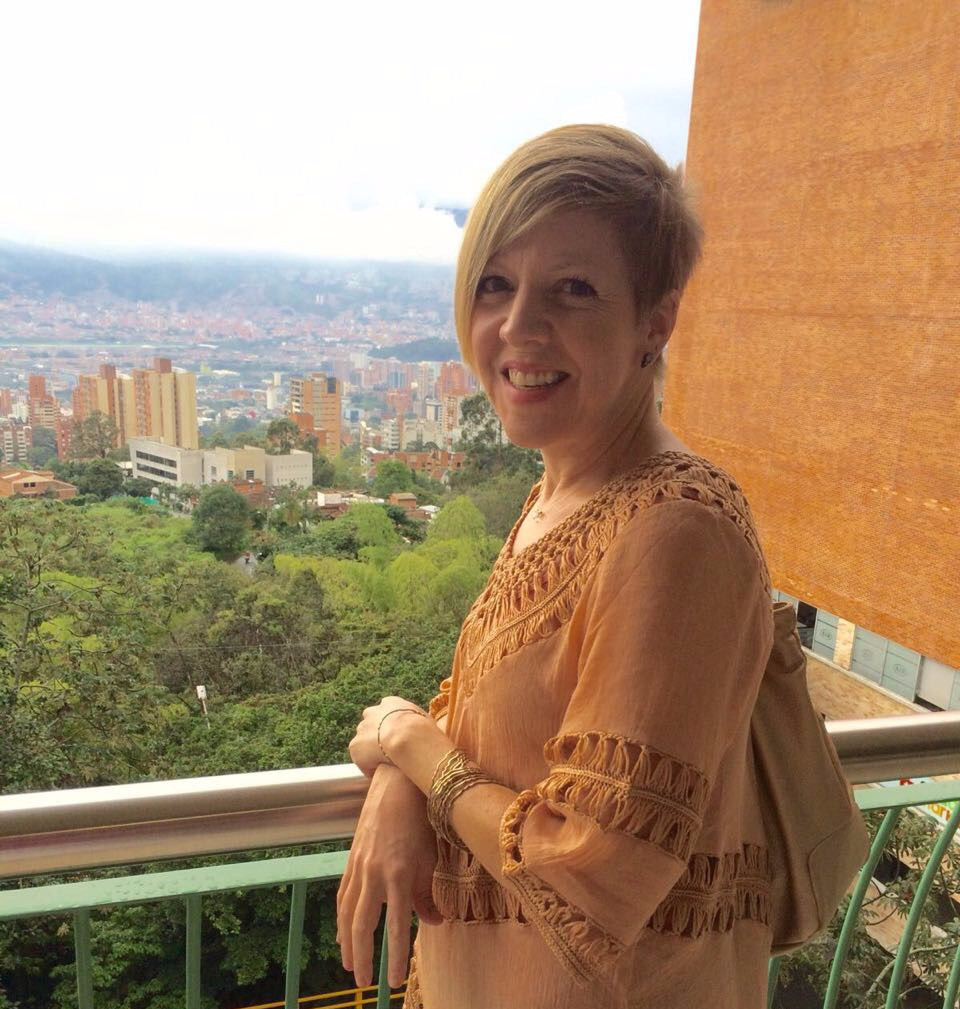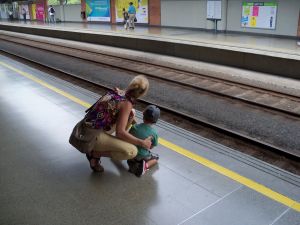Author’s Note: I’m just now publishing some old essays. I wrote this post (various versions) between March 2016 and June 2016. The thoughts expressed should be associated with that time period.

When being welcomed to the table as a guest doesn’t feel like enough.
“You know what really gets me?” my friend asked. “That question – ‘Where are you from?’ I get so tired of going through that interview on a daily basis.”
While I hadn’t felt specific annoyance toward the “Where are you from?” question, I knew what my friend meant. I live in Colombia, and by any standard, I don’t look Colombian. Given my pasty appearance and accented Spanish, it’s obvious to anyone that I’m not from here. My friend, who’s Nepalese and looks nothing like me, has the same problem. But for her, the where-are-you-from interrogatory was also an issue during her years in Oregon. In both Colombia and the US, she was flagged, immediately and automatically, as an outsider.
My most blatant personal experience of this occurred a few years back in the Cartagena airport. I was returning home after a trip to the US and was excited to be able to get in the citizens/residents immigration line thanks to my newly acquired permanent residency visa and cédula de extranjería, the national ID card for foreigners. Being able to avoid the tourist-filled foreigner line would save me significant time. I eagerly entered the shorter line, only to have people tell me emphatically and repeatedly that I was in the wrong place. The protest was such that I finally doubted myself and joined the long tourist line. After about an hour, I reached the front only to have the immigration officer confirm what I already knew – I had been in the correct line to begin with.
Despite annoyances like this, in my case being flagged as an outsider often has its advantages. I’m white and blonde, which in Colombia, as in most places, seems to generate certain pleasantries or courtesies that might not come my way otherwise. When I try to accomplish bureaucratic tasks – like getting my son’s US birth registered here or getting the RUT number necessary for employment – my appearance allows me to leverage my own ignorance, sometimes resulting in sympathy that leads to assistance. The reaction to blondness is most obvious with my son, whose golden hair people love to ruffle on the street and with whom strangers occasionally stop to take photos. White privilege does not know international borders.
But for me now, advantages or disadvantages aren’t really the issue – I just want to feel part of the community in which I live. “Outsider fatigue” has begun to set in. I don’t quite long for some version of the old TV show Cheers – where everybody knows my name – but I would like to be able to get in a taxi without having to tell the story, often for the second or third time that day, of how I ended up in Colombia. Repeating it can get tiresome, particularly when one is not on vacation but is instead living the quotidian stress of normal city life. The unfortunate conundrum is that the people who are asking are almost always well-intentioned. They are trying to be friendly and welcoming; they are aiming for inclusion, not exclusion.
Nowhere was this more apparent than recently, at the yoga studio I frequent at least twice a week. I went for a special event – a meditation led by a wonderful visiting instructor whose first event in the studio I had attended the month prior. For this second event, attendance was low and I was the only foreigner. Toward the end of the meditation, the instructor said with a smile (in Spanish), “Now we’re going to sing, and Courtenay can practice her Spanish.” I smiled back, but inside my heart sank. First, my pride hurt – we’d been chanting throughout the class, and by this point I felt it should have been clear that my Spanish was pretty decent. But more than that, the group was small, and I desperately wanted to feel a part. I thought I had perhaps overcome the outsider identity in that space if not in the city at large. But here we were, at the end of the two hours and, in a friendly, well-meaning way, I’d had my difference called out in front of everyone. I’d been put back in my outsider place.
Feeling like a constant outsider has been a learning experience for me. My past jobs in the United States involved working with and assisting people from diverse backgrounds. As a result, I considered myself highly ranked on the cultural competency scale. And yet, I am now 100% sure that on occasion I have been the person who, like the meditation instructor, sought to include another but did so in a way that placed them outside the realm of belonging. I’m not sure how to avoid that problem, but maybe part of the solution is remembering that the stories we assign people based on their appearance are not the true narratives of their lives. They are our own constructs, based on stereotypes that author Chimamanda Ngozi Adichie, in her TED Talk entitled, “The danger of a single story”, rightly flags as problematic because they’re incomplete. Whatever our first question, our opening line, our gesture of inclusion, it shouldn’t be a product of our own assumptions.
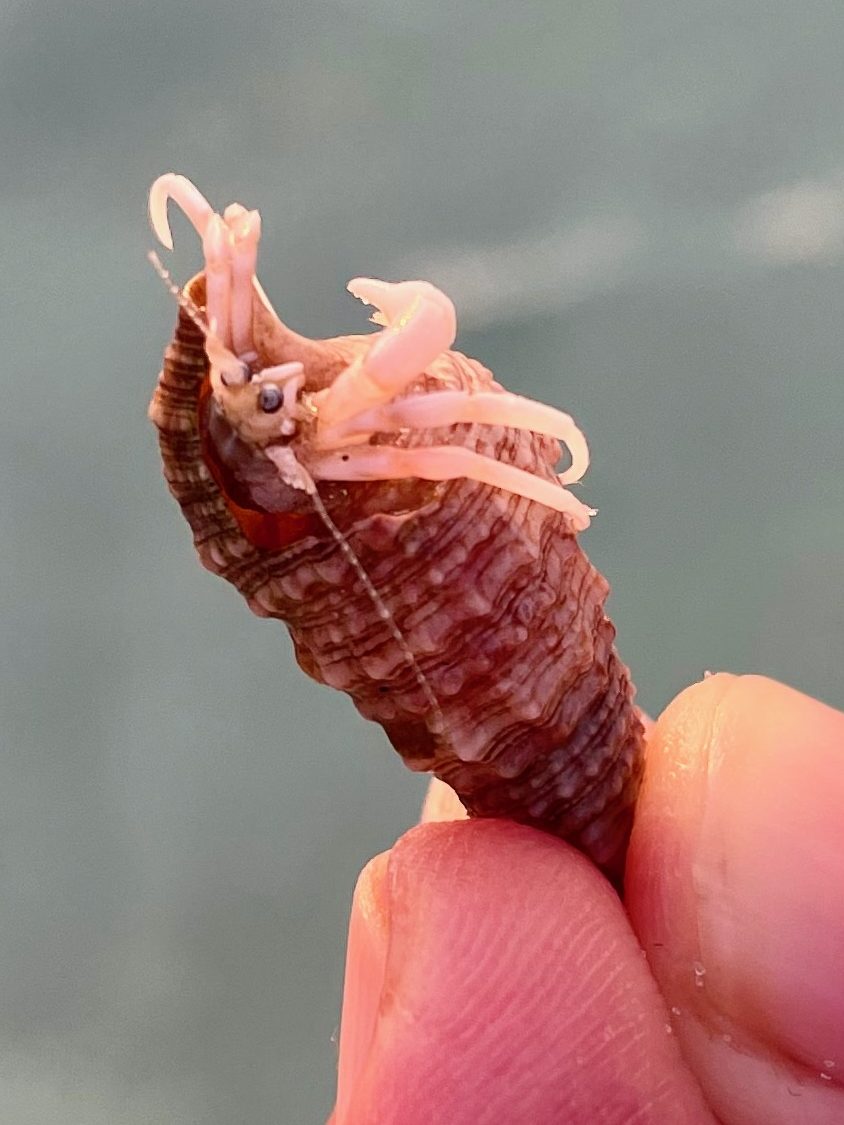


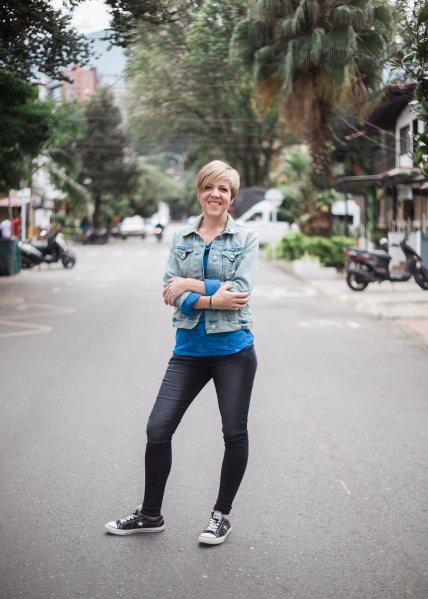


 Sometimes it seems horses and motos frequent the Autopista Medellín-Bogotá nearly as often as the trucks for which it’s intended. As the two-lane passes through Antioquia, the Colombian state dominated by Medellín, it yields views of waterfalls and easy access to charcos, or natural swimming holes.
Sometimes it seems horses and motos frequent the Autopista Medellín-Bogotá nearly as often as the trucks for which it’s intended. As the two-lane passes through Antioquia, the Colombian state dominated by Medellín, it yields views of waterfalls and easy access to charcos, or natural swimming holes. Past the Santuario toll (always much further past than the locals say), not far from Cocorná, lies the Hotel-Restaurante El Descanso. In the US, it would be only a truck stop – oil leaches slowly from the undercarriage of parked semi nearby – but here the adjacent charco makes it something more.
Past the Santuario toll (always much further past than the locals say), not far from Cocorná, lies the Hotel-Restaurante El Descanso. In the US, it would be only a truck stop – oil leaches slowly from the undercarriage of parked semi nearby – but here the adjacent charco makes it something more. On weekends, locals gather to drink and chat by the quebrada’s banks and take dips in the icy cold waters. In the shallows, children splash and squeal; young men teach the newbies to skip stones. A very old man, unable to walk, lies on a grassy spot, wrapped in blankets and attended to by his wife.
On weekends, locals gather to drink and chat by the quebrada’s banks and take dips in the icy cold waters. In the shallows, children splash and squeal; young men teach the newbies to skip stones. A very old man, unable to walk, lies on a grassy spot, wrapped in blankets and attended to by his wife.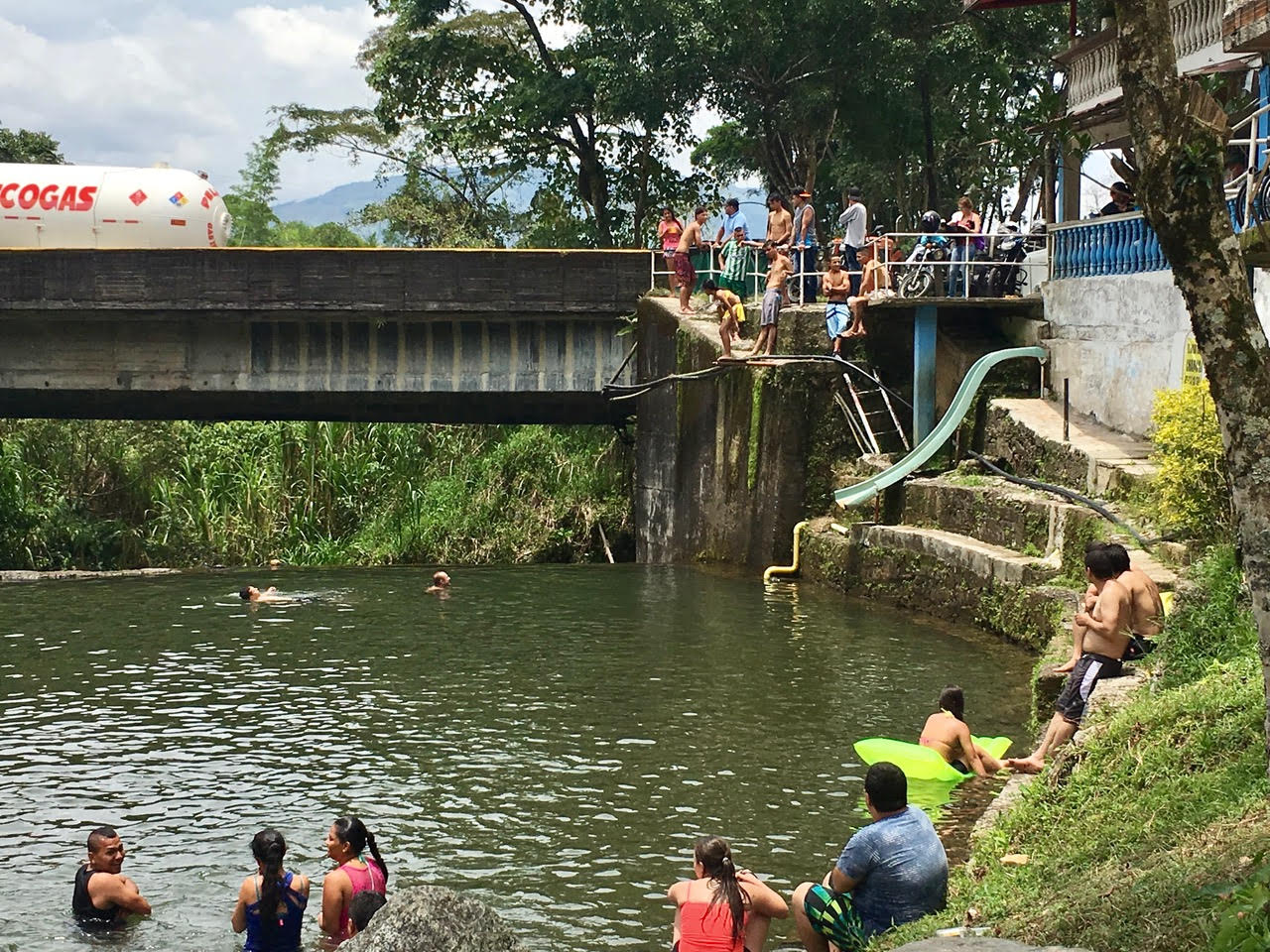 Young people congregate around the deep end and on the balcony of the tiendita above. A cracked pool slide remains installed in the concrete embankment. On the makeshift diving platform, a girl readies herself to leap as a tanker truck roars by. She backs away as those below yell encouragement.
Young people congregate around the deep end and on the balcony of the tiendita above. A cracked pool slide remains installed in the concrete embankment. On the makeshift diving platform, a girl readies herself to leap as a tanker truck roars by. She backs away as those below yell encouragement.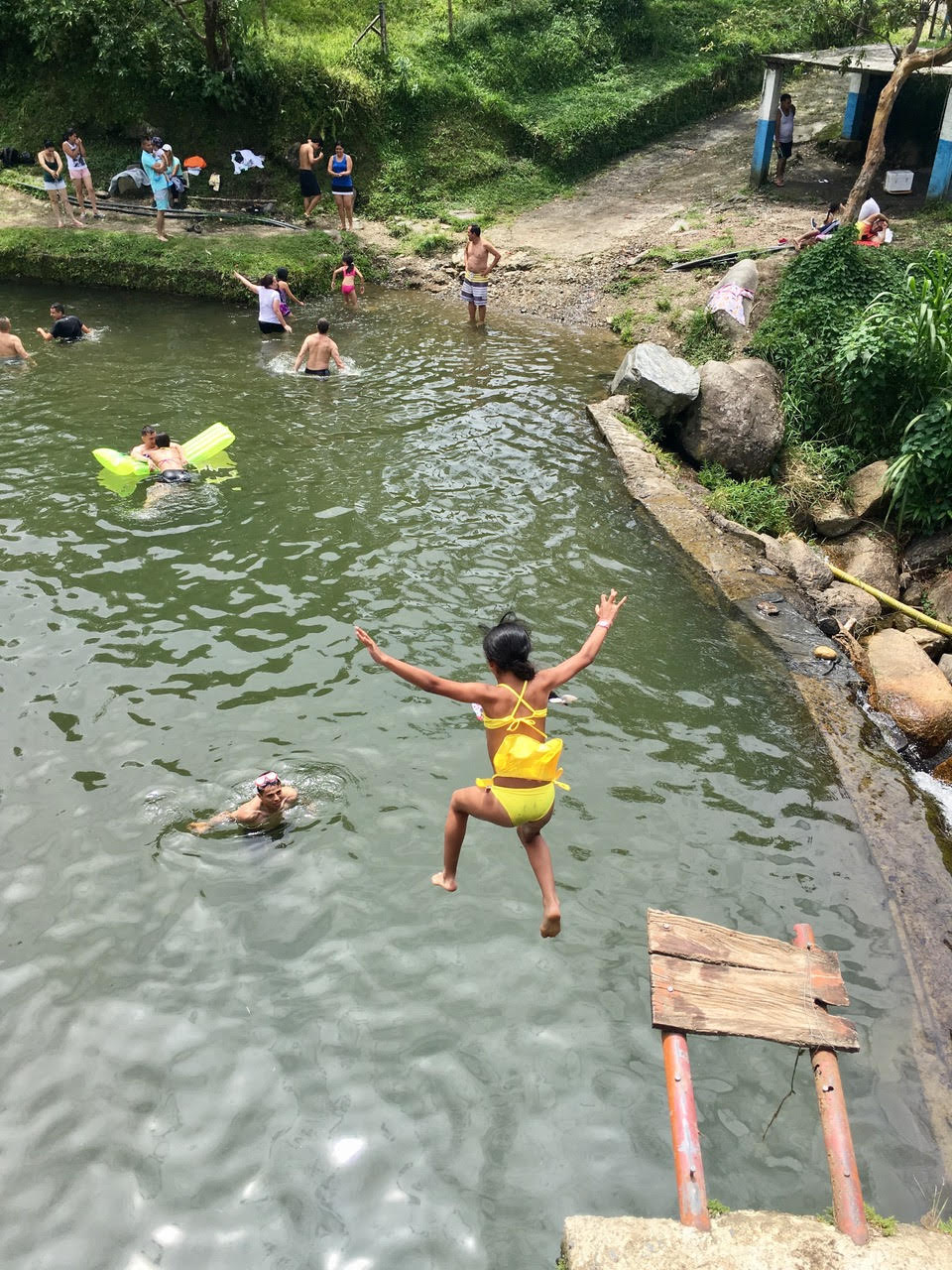 After several minutes of indecision, the girl is airborne. She doesn’t dive head first to meet her reflection, as some of the adult males have done, but she’s the youngest to make the attempt today. Those watching break into smiles as she surfaces.
After several minutes of indecision, the girl is airborne. She doesn’t dive head first to meet her reflection, as some of the adult males have done, but she’s the youngest to make the attempt today. Those watching break into smiles as she surfaces.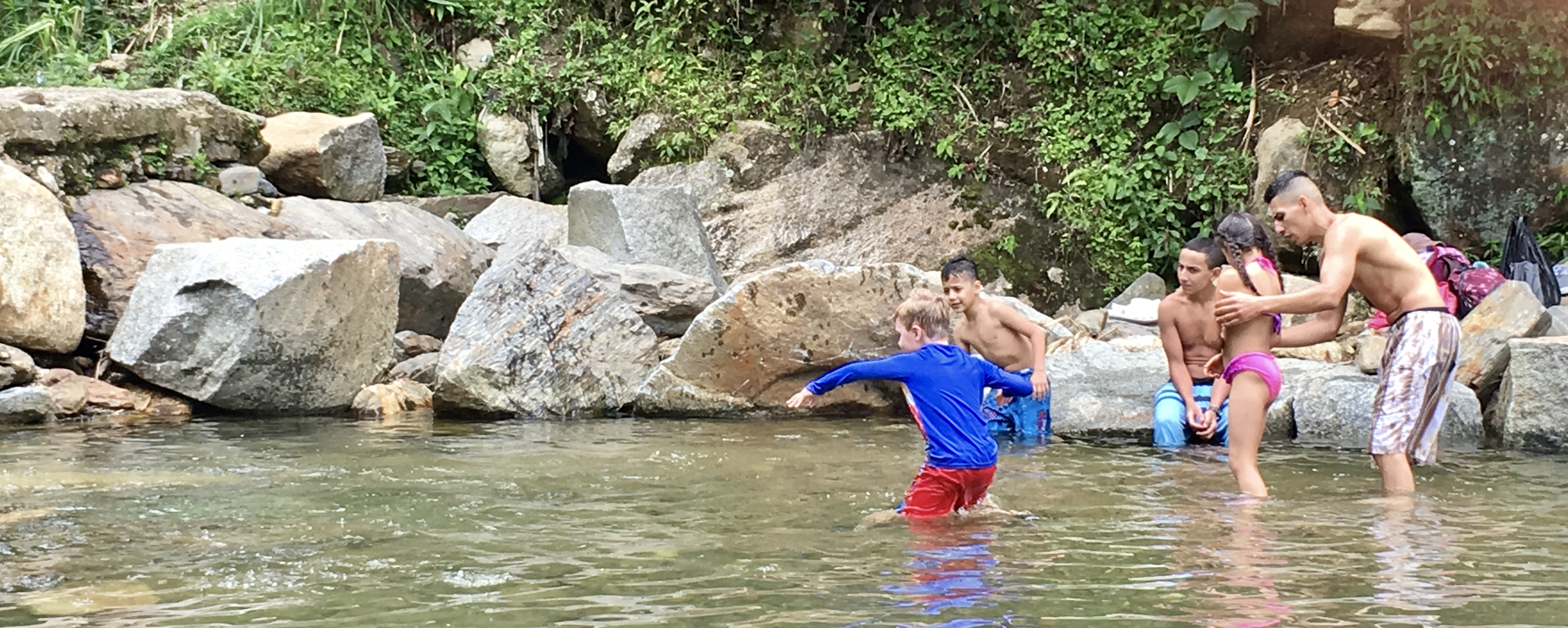 Learning to skip stones.
Learning to skip stones.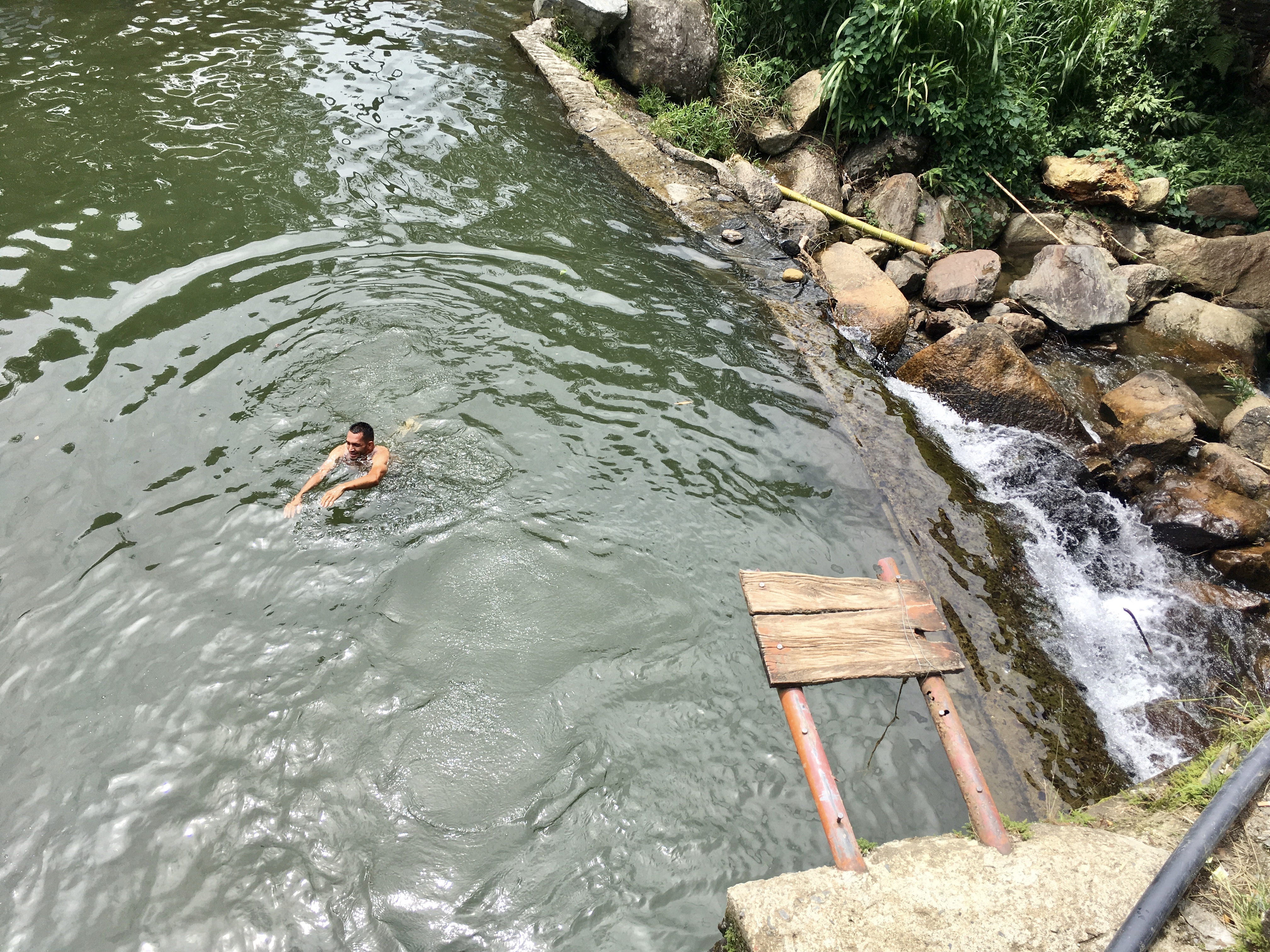 The diving platform.
The diving platform. And he’s off!
And he’s off!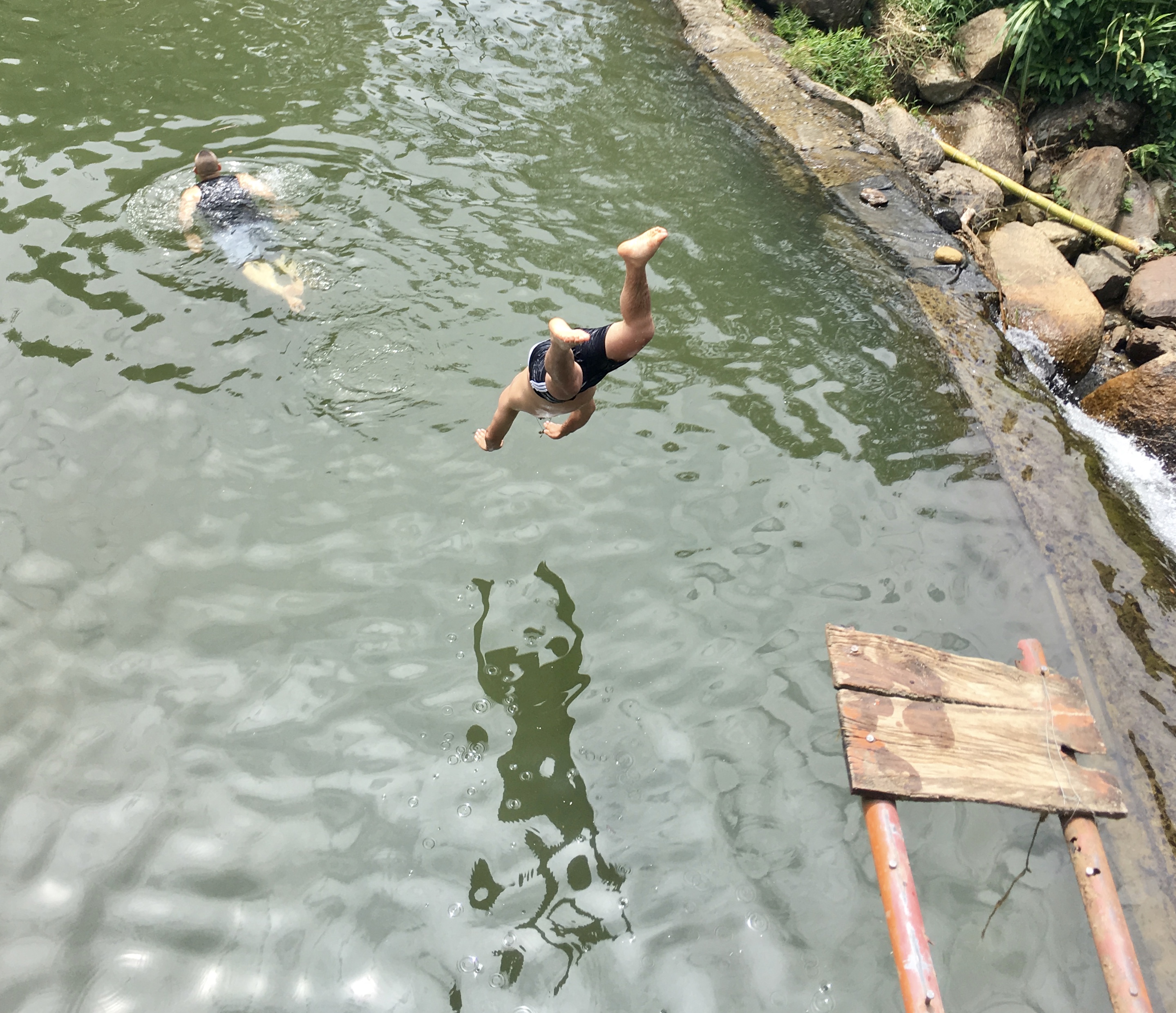 Man meets himself.
Man meets himself.
